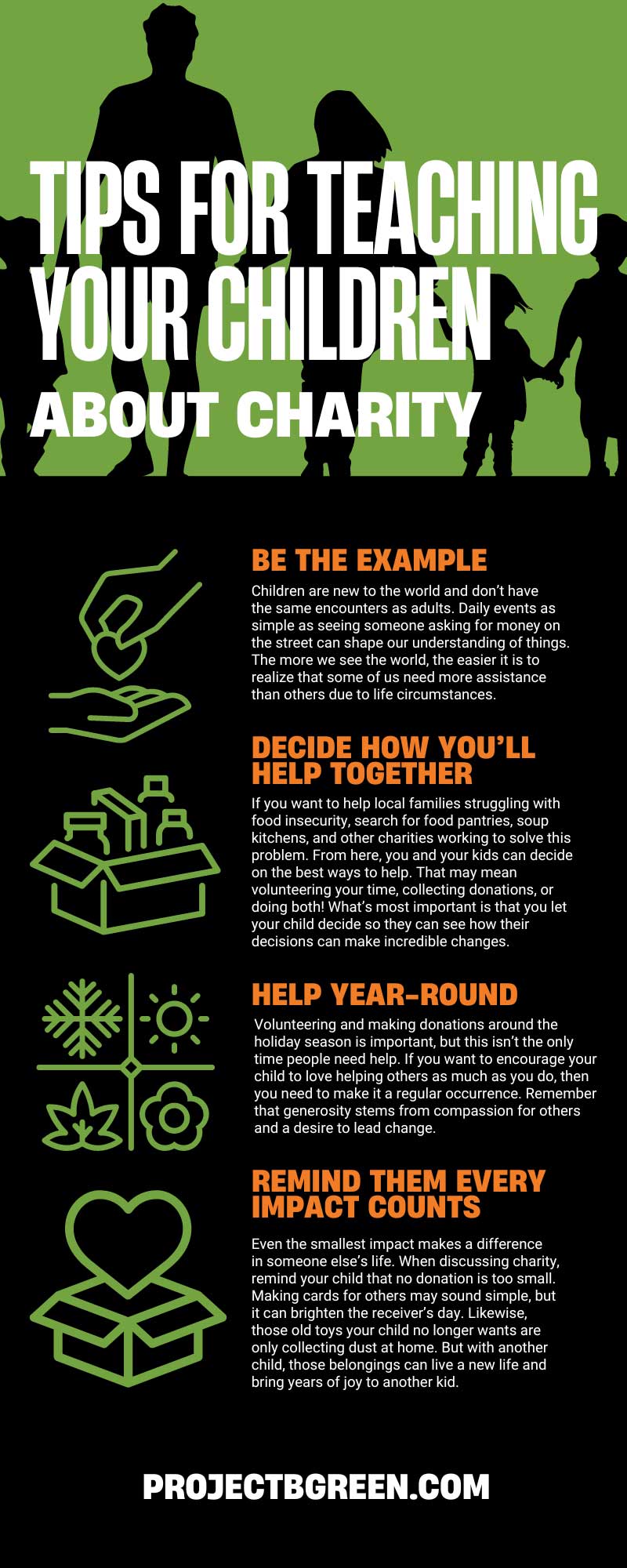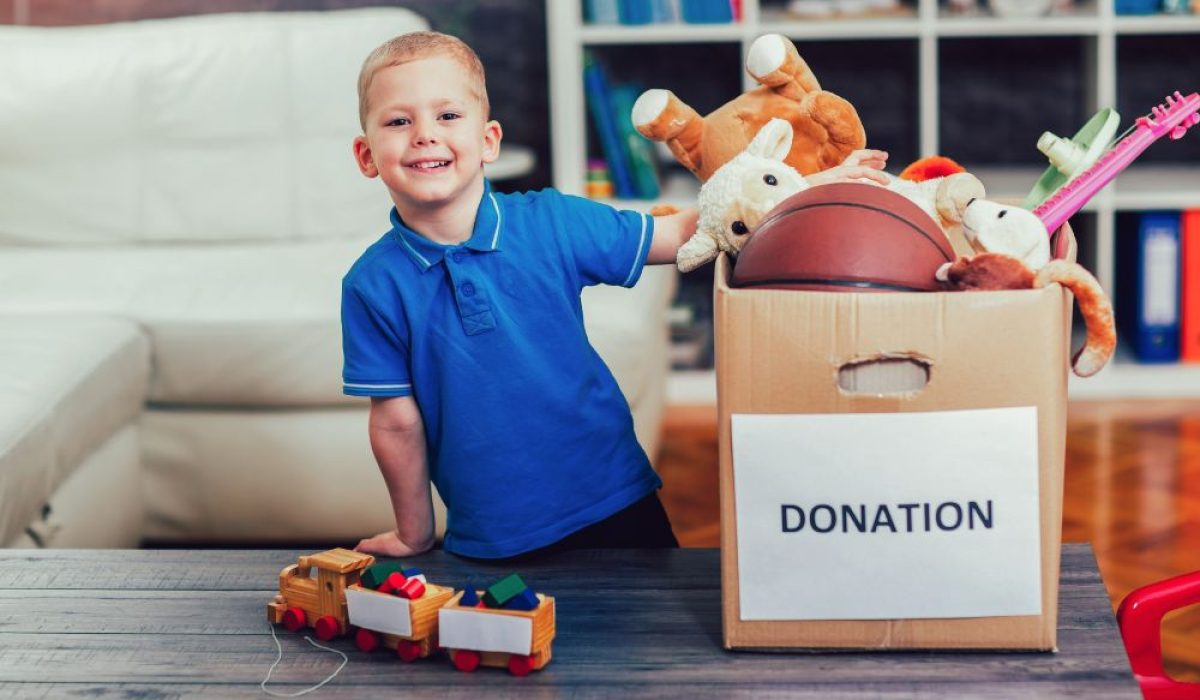Children are our future, and whether we’re parents, teachers, or other caregivers, we have various experiences to walk them through. Yet it’s these very encounters that teach us life lessons about the world we live in. One of the most important things to instill in children is a love for charity. You can make things easier with these tips for teaching kids about charity.
Be the Example
Children are new to the world and don’t have the same encounters as adults. Daily events as simple as seeing someone asking for money on the street can shape our understanding of things. The more we see the world, the easier it is to realize that some of us need more assistance than others due to life circumstances. As kids, we’re innocent and have yet to comprehend these things or the problems they could bring onto a person or family.
To help your child realize the importance of giving, you need to set an example and consistently model the behavior. Donate unwanted, gently used items to a good cause and volunteer your time at local fundraisers. When talking with your child about these events, explain why you enjoy doing them. Helping others comes out of the kindness of your heart—you don’t need recognition from others.
When you explain that helping is an intrinsic motivator rooted in empathy, it helps children see the reward of offering charity. Remember, you are their primary role model, and they’ll mimic the behaviors you display.
It Starts at Home
Generosity starts in your house. Before asking your children to join you on fundraisers or for help collecting items for a charity drive, adopt a giving lifestyle.
Encourage your child to share their belongings with friends and family, but remember that you also need to do the same. Telling your child to share without modeling the behavior can confuse them or make them see things as unfair. And that’s the opposite of what charities strive to do. Most organizations strive to create an equal playing field for everyone.
Have a Giving Jar
One great way to encourage giving is to have a collection jar that’s easy for your child to spot. Begin by leading by example and putting your own money into it. One way you can encourage them to give is by asking if they want to give some cash. Similarly, if you give your child an allowance, you could encourage them to put a portion into the giving jar.
Once the container fills up, work together to decide which charity you’ll donate the money to, then decide on a new organization to help next.
Decide How You’ll Help Together
Once you’ve begun teaching your child about the importance of sharing and generosity, it’s time to get hands-on! Sit down together and create a plan for what kind of cause you’d like to assist first, then track down local charities focused on this.
For example, if you want to help local families struggling with food insecurity, search for food pantries, soup kitchens, and other charities working to solve this problem. From here, you and your kids can decide on the best ways to help. That may mean volunteering your time, collecting donations, or doing both! What’s most important is that you let your child decide so they can see how their decisions can make incredible changes.
Do Age-Appropriate Activities
The age of your child impacts what activities would be best to do. Young children have different capabilities and understandings than pre-teens. Consider the following ways you can make a difference and compare it to your child’s age:
- Making cards for the elderly or sick
- Doing a charity walk or run
- Collecting school supplies
- Donating old clothes, toys, and books
- Cleaning up the neighborhood
Young children may be more interested in making cards because it allows them to get creative while also bringing cheer to someone else. On the other hand, an older child may want to make a difference in the lives of their peers and donate clothes, school supplies, books, etc.
Project B Green
Project B Green is an organization that strives to keep our community beautiful for everyone! We accept various types of donations, including clothing, shoes, books, home décor, and much more. Declutter your home or start a charity drive with your child to collect some essential belongings to help those in need. Once you finish, load up the car together and bring everything to one of our donation drop-off locations!
Help Year-Round
Volunteering and making donations around the holiday season is important, but this isn’t the only time people need help. If you want to encourage your child to love helping others as much as you do, then you need to make it a regular occurrence. Remember that generosity stems from compassion for others and a desire to lead change.
Try to do charitable acts once a month while encouraging empathy in between events. This helps shape your children and their way of thinking but also helps prevent charity from feeling like a chore they have to do. You could also make it more fun by blending it with family bonding time and allowing each member to decide how you’ll help that month, then rotating the following month.
Remind Them Every Impact Counts
Even the smallest impact makes a difference in someone else’s life. When discussing charity, remind your child that no donation is too small. Making cards for others may sound simple, but it can brighten the receiver’s day. Likewise, those old toys your child no longer wants are only collecting dust at home. But with another child, those belongings can live a new life and bring years of joy to another kid.
Explain Why Charity Matters
Helping others should never feel like a chore or something you’re forced to do. We give aid to others because we’d hope for the same treatment if we were in that position. Talk with your child before, during, and after charitable events to explain why giving is so important.
The more we understand, the easier it is to realize how much of an impact each decision makes on those around us. One key tip for teaching kids about charity is to love what you’re doing and the imprint it leaves on the world. So sit with your child and decide which charity you want to help first. By contributing to your community and volunteering time together, you both can make it an even better place for everyone.


